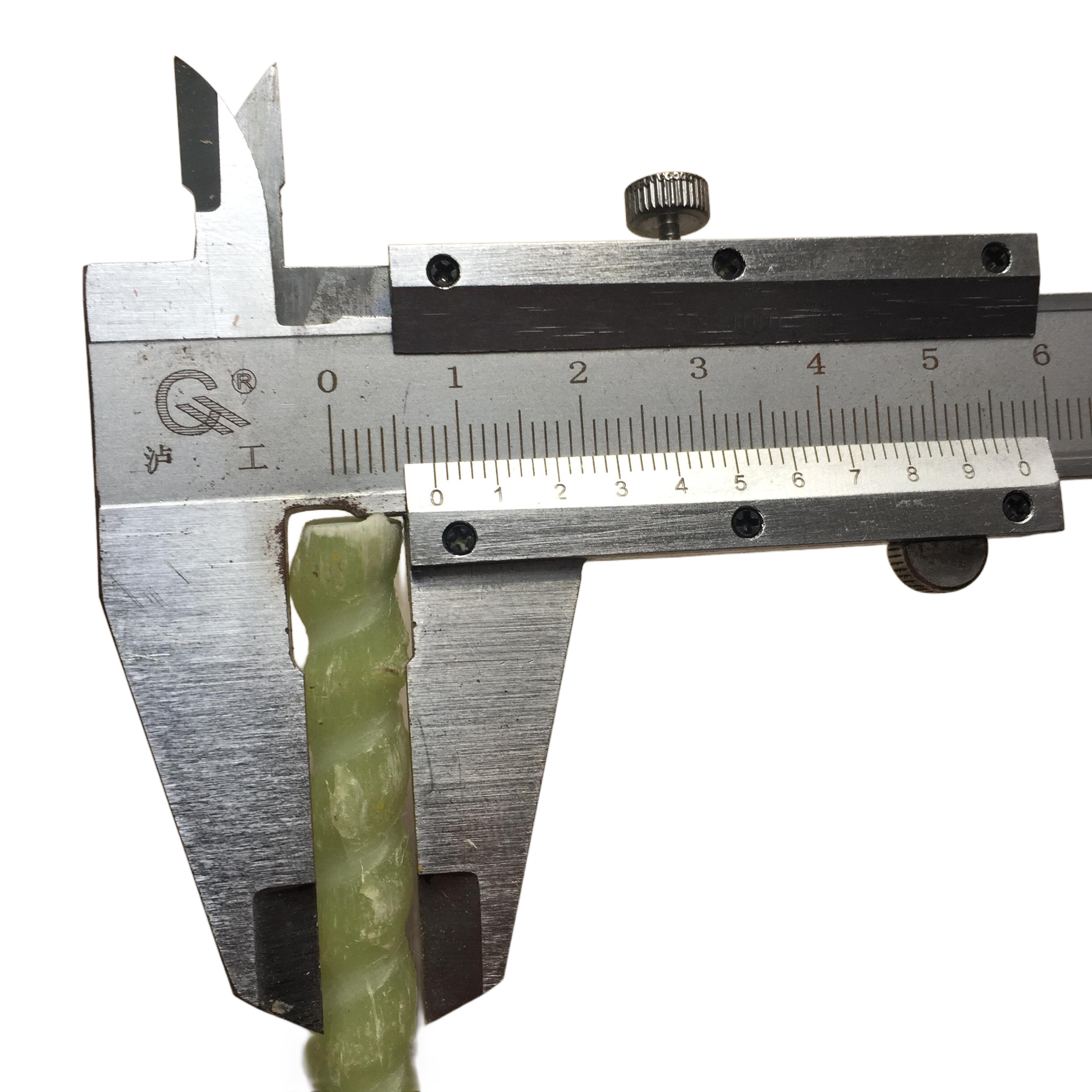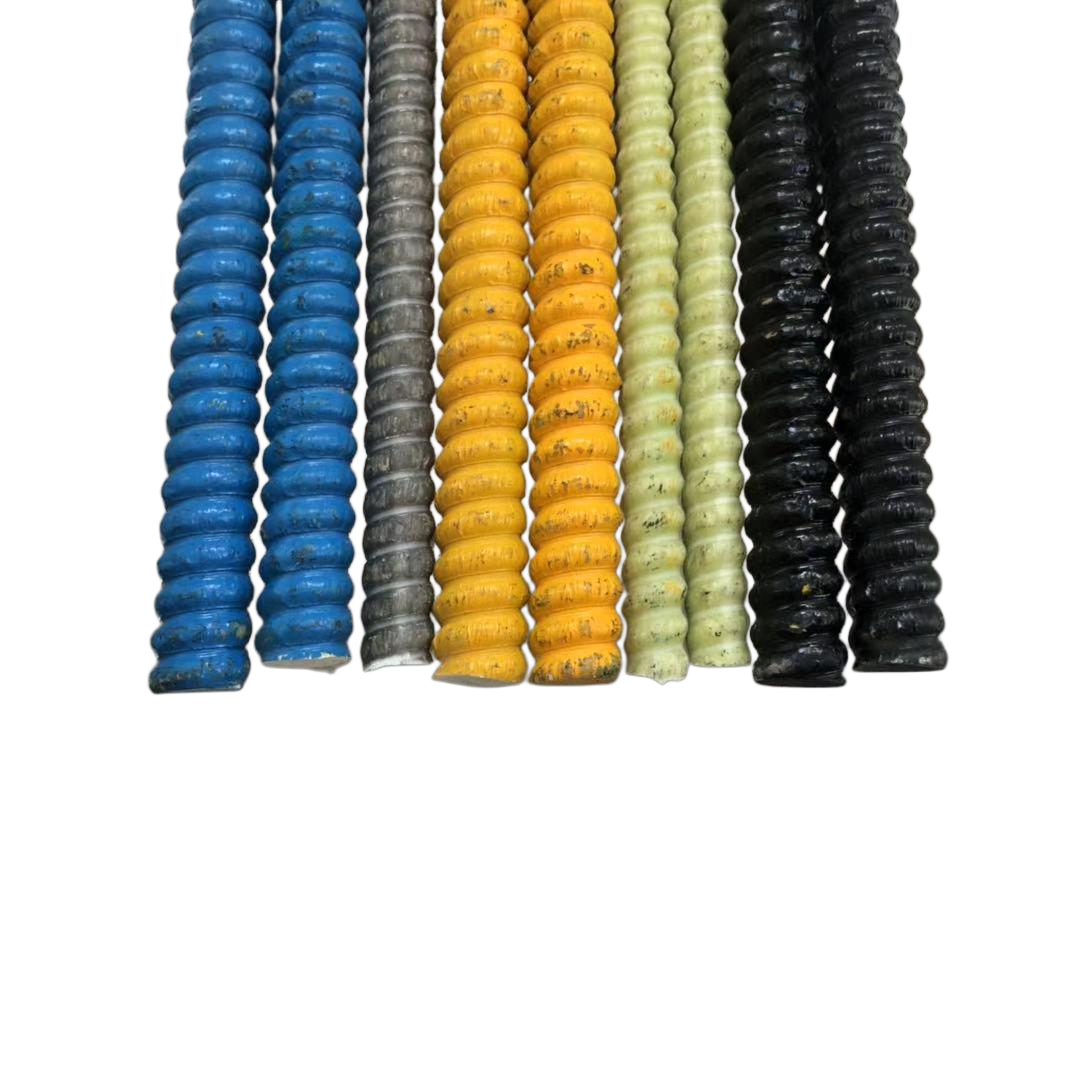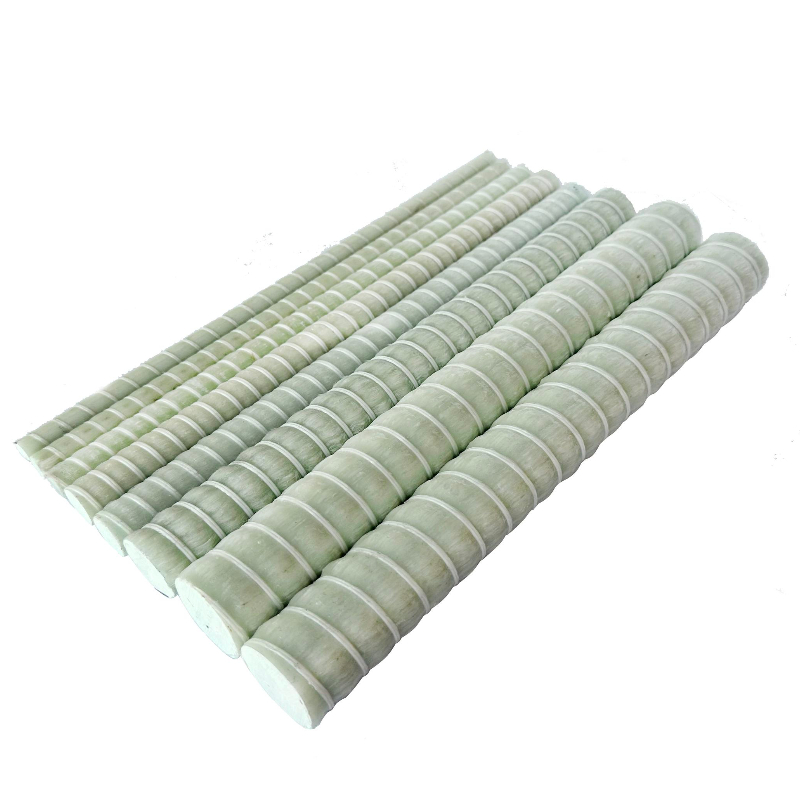Introduction
Fiberglass rebar has emerged as a promising alternative to traditional steel reinforcement in concrete structures. Its advantages, such as corrosion resistance and lightweight properties, make it an attractive option for engineers and builders. However, like any construction material, fiberglass rebar is not without its problems. Understanding these issues is crucial for making informed decisions in construction projects. This article delves into the various problems associated with fiberglass rebar, providing a comprehensive analysis for industry professionals considering its use.
Mechanical Properties and Limitations
One of the primary concerns with fiberglass rebar is its mechanical properties compared to steel. While it offers a high tensile strength, its modulus of elasticity is significantly lower than that of steel. This means that fiberglass rebar is less stiff and can lead to greater deflections under load. In structural applications where rigidity is crucial, this can pose a significant problem.
Additionally, fiberglass rebar is brittle by nature. Unlike steel, which can deform plastically before failure, fiberglass rebar tends to fail suddenly without significant deformation. This lack of ductility can be a critical issue in seismic zones where structures are subjected to dynamic loads. Engineers must carefully consider these mechanical limitations when designing structures that incorporate Fiberglass Rebar.
Thermal Expansion and Compatibility
Another problem with fiberglass rebar is its coefficient of thermal expansion, which differs from that of concrete. When temperatures fluctuate, this mismatch can lead to internal stresses within the concrete structure, potentially causing cracking or other forms of damage over time. In environments with extreme temperature variations, this issue becomes more pronounced and can affect the longevity and integrity of the structure.
Moreover, temperature-induced stresses can compromise the bond between the fiberglass rebar and the concrete matrix. Since the bond strength is critical for load transfer, any degradation can lead to structural deficiencies. It is essential to evaluate the thermal compatibility of fiberglass rebar in the context of the specific environmental conditions expected throughout the structure's service life.
Fire Resistance Concerns
Fire resistance is a significant consideration in construction materials, and fiberglass rebar presents challenges in this area. Fiberglass materials can lose strength at relatively lower temperatures compared to steel. In the event of a fire, the structural integrity of fiberglass-reinforced concrete can be compromised more quickly, potentially leading to premature failure.
The resin matrix within the fiberglass rebar is susceptible to thermal degradation. When exposed to high temperatures, it can soften or char, reducing the load-bearing capacity of the rebar. This characteristic necessitates additional fire protection measures when using fiberglass rebar, which can increase the overall cost and complexity of the construction project.
Bonding Issues with Concrete
The bond between rebar and concrete is vital for the composite action required in reinforced concrete structures. Fiberglass rebar has a different surface texture and chemical composition compared to steel, which can affect its bonding characteristics. Poor bonding can lead to slippage between the rebar and concrete, reducing the overall structural performance.
Research has shown that modifications to the surface of fiberglass rebar, such as sand coating or deformation patterns, can enhance bonding. However, these solutions may not fully replicate the bond strength achieved with traditional steel rebar. Engineers must factor in potential bonding issues during the design phase and consider appropriate measures to mitigate this problem.
Long-Term Durability and Creep
Long-term durability is a concern with fiberglass rebar, particularly regarding creep under sustained loads. Fiberglass materials can exhibit creep, where deformation occurs over time when subjected to constant stress. In structural elements where long-term load-bearing is critical, creep can lead to excessive deflections and potential structural issues.
Environmental factors such as moisture, chemicals, and ultraviolet exposure can also affect the durability of fiberglass rebar. Although it is resistant to corrosion, the combination of mechanical stress and environmental exposure can degrade the material properties over time. Long-term studies are still needed to fully understand the lifespan and performance of Fiberglass Rebar in various conditions.
Cost Implications
While fiberglass rebar can offer lifecycle cost savings due to its corrosion resistance, the initial material cost is generally higher than that of steel rebar. This cost difference can be a significant factor in project budgets, particularly for large-scale constructions. Additionally, the need for specialized handling and installation techniques can add to labor costs.
Contractors may require training to work effectively with fiberglass rebar, and tools used for steel may not be suitable. These considerations can impact the overall cost-effectiveness of using fiberglass rebar. A thorough cost-benefit analysis is essential to determine if the advantages outweigh the financial implications for a specific project.
Limited Standards and Codes
The adoption of fiberglass rebar is hindered by the limited availability of standardized design codes and guidelines. While organizations like the American Concrete Institute (ACI) have begun to provide recommendations, they are not as comprehensive as those available for steel reinforcement. This lack of standardization can lead to uncertainties in design and approval processes.
Engineers may face challenges when justifying the use of fiberglass rebar to project stakeholders and regulatory bodies. Without widespread acceptance and clear guidelines, the risk associated with deviating from traditional materials can be a deterrent. Ongoing research and development of standards are necessary to facilitate broader acceptance and utilization of Fiberglass Rebar.
Installation Challenges
Fiberglass rebar requires careful handling during transportation and installation. Its lower shear strength compared to steel means it can be more susceptible to damage from cutting, bending, or improper handling. Unlike steel rebar, fiberglass rebar cannot be bent on-site, necessitating precise fabrication to required shapes before delivery.
The inability to bend fiberglass rebar on-site limits flexibility during construction and can result in delays if modifications are needed. Contractors must plan meticulously and ensure that the rebar is manufactured to exact specifications. Additionally, cutting fiberglass rebar produces fine dust particles that require appropriate personal protective equipment (PPE) and safety measures during handling.
Environmental and Health Concerns
While fiberglass rebar is often touted for its durability and resistance to environmental degradation, the production and handling of fiberglass materials raise environmental and health concerns. The manufacturing process involves resins and fibers that can be hazardous if not managed properly. Workers may be exposed to harmful dust and emissions during production and installation.
Disposal and recycling of fiberglass materials are also challenging. Unlike steel, which is highly recyclable, fiberglass rebar does not have established recycling processes, leading to potential environmental impacts at the end of its life cycle. Sustainable practices and regulations need to be developed to address these concerns associated with Fiberglass Rebar.
Compatibility with Other Materials
Fiberglass rebar may not be compatible with certain concrete additives and other materials used in construction. Chemical interactions between the resin matrix of the rebar and admixtures in concrete can affect curing processes and long-term performance. It is essential to test material compatibility to prevent adverse reactions that could compromise structural integrity.
Moreover, connecting fiberglass rebar to traditional steel reinforcement or other metallic components can create galvanic corrosion cells, potentially leading to accelerated degradation of the adjacent metal parts. Isolation techniques or alternative connection methods may be required, adding complexity to the design and construction process.
Conclusion
Fiberglass rebar presents both opportunities and challenges in the field of construction. Its advantages, including corrosion resistance and lightweight properties, make it an appealing alternative to steel in certain applications. However, the problems associated with mechanical limitations, thermal compatibility, fire resistance, bonding issues, and other factors cannot be overlooked.
A thorough understanding of these issues is essential for engineers and construction professionals. By carefully considering the specific requirements of a project and the characteristics of Fiberglass Rebar, informed decisions can be made to balance benefits against potential drawbacks. Ongoing research, standardized guidelines, and technological advancements may help mitigate these problems in the future, paving the way for broader adoption of fiberglass rebar in the construction industry.




























